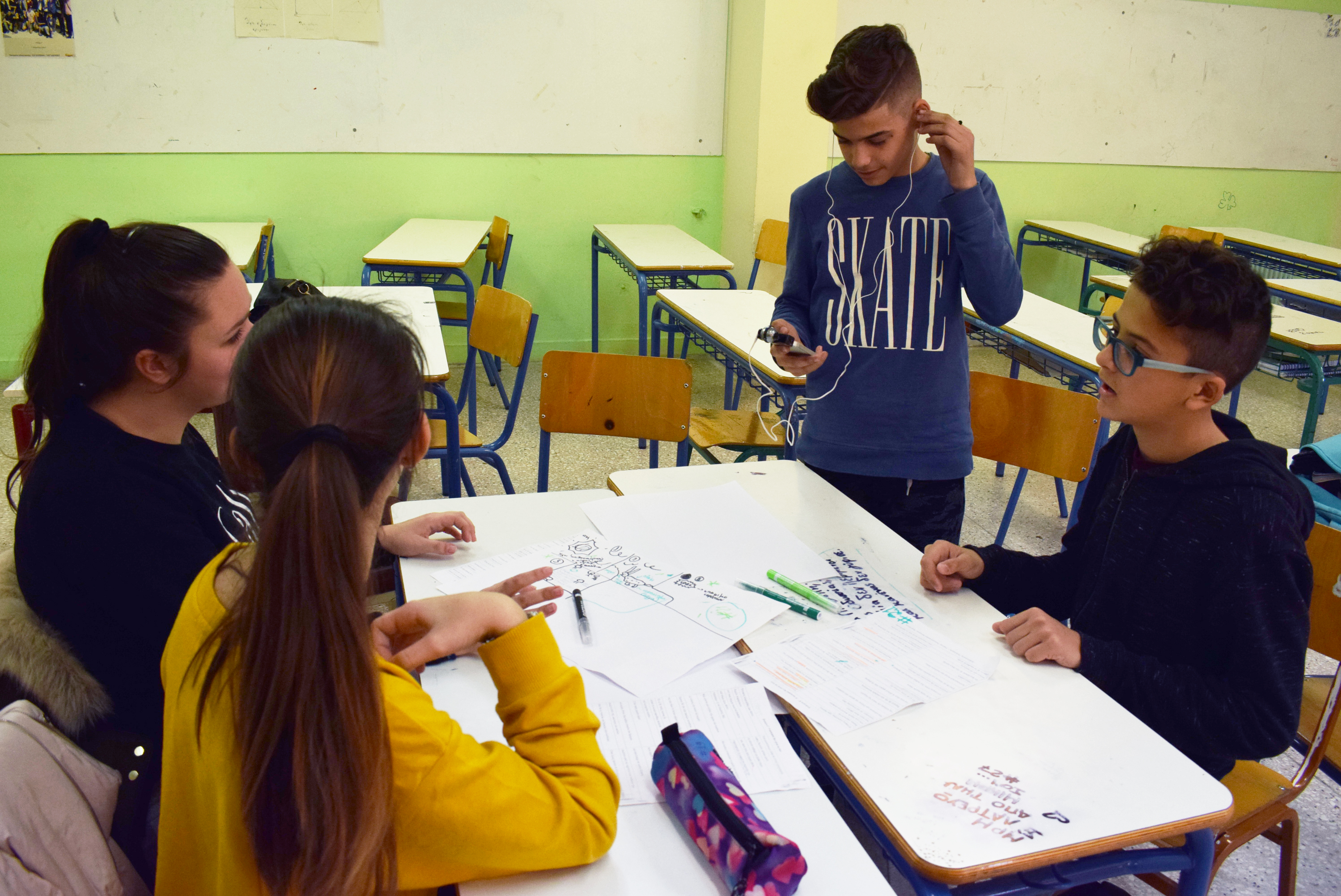Soundscapes
Sound is an area crucial in media production which is often considered secondary. We are here dealing with the narrative capacities of sound and how it carries meanings which can be created in a process similar to the one we use for visuals. The idea of “shots”, “background” and “depth of field” may be well transferred from visual to aural experiences.
Our aim is to realise the semantics of sound in relation to how story progression works and how, sounds can create images, anticipation and feelings. This activity also helps understand how in media, we structure content both in sequential order (on a timeline) and in layers (by using more than one, parallel tracks) to structure the editing. Finally, sounds, help realize not only aural but visual rhythm too and assist in creating a film narration due to particular characteristics that distinguish them from visuals. We can focus in two of them which are of determining importance:
- Clarity: sounds have a very clear duration while images can be held in front of our eyes for a length of time depending on various factors which become evident during editing. Also, the quality of a sound is indispensable for it’s interpretation: while our eyes can be very tolerant upon shaky, unfocused or “badly” framed shots, our ears will immediately complain if exposed to a low, badly recorded or unclear sound effect.
- Abstraction: the sound of “a door closing” gives hints to what kind of door it may be-metal, wooden, interior, gate door etc.- but does not specify the exact appearance and location of the door. This kind of abstraction is limited only once we introduce other background or adjoining sounds. These choices are very conscious and move the story forward.
Activity:
- The trainer proposes a location in which the story will take place.
- Group brainstorming about the sound profile of this location.
- Answer to the following questions:
- What sounds are characteristic of this site? Who might be there and what happens? How do they develop through time? What is the main feeling we have? Could these sounds form some kind of storytelling?
- The group imagines the respective sounds, make lists and organise a new narrative. Sounds develop parallel in various levels and kind of atmosphere.
- A self made “music sheet” with written and/or drawn elements, maps their thoughts, organising sounds on a timeline, their levels and sequence.
- Roles are shared within the team as in an orchestra. The group assigns a sound recordist and a conductor.
- The groups are encouraged to rehearse with various objects and self made sounds.
- Rehearsal, recording, listening, corrections.
- The final recording is a one, continuous take so the lack of editing reinforces the understanding of sequence and rhythm in relation to the desired narrative effect.

By recording and listening the group immediately reflects on the result and realize gradually the possibilities as well as the technical limits of the microphone and the materials they use. This process teaches mainly classical narrative rules of cause and effect, background atmosphere and foreground events. The design is the result of a collective process, can be modified in short time and include as many “tracks” and layers as the idea requires.
Tips for the facilitator:
The choice of theme can be more or less local and adapt to national or international cultural concepts.
Adjustments: usually needed to make the soundscape more clear, dense and less verbal.
If more time is available, visuals can be added and thus the soundscape is transformed to a soundtrack.
Pedagogic Objectives /competencies
Literacy
- Research/ Brainstorming/ Design
- Recognition and development of narrative and dramatic moments.
Media Creation
- Using digital devices for creative purposes, (e.g. sound recording)
- Realize rhythm in time based arts
- Structure content both in sequential order and in layers
- Discover the qualities of sound: 1. as expressive medium (duration, rhythm, depth, intensity, synchronicity). 2. as narrative medium.
Communication:
- Social-communication skills
- Organizational skills

Material needed
Microphone or mobile phone used only for sound recording, loudspeakers
A3 paper, pencils
No need to edit audio sound as the track is rehearsed and then recorded as a whole.
Duration (hours)
2 hours
Key words
Sound, Media literacy, Multimodality, Layers of sounds, Narrative
Examples
Uploaded on the “Soundscapes “ playlist in Soundcloud
The publication was created as part of the project: EMELS.
This publication reflects the views only of the author, and the Commission cannot be held responsible for any use which may be made of the information contained therein.

